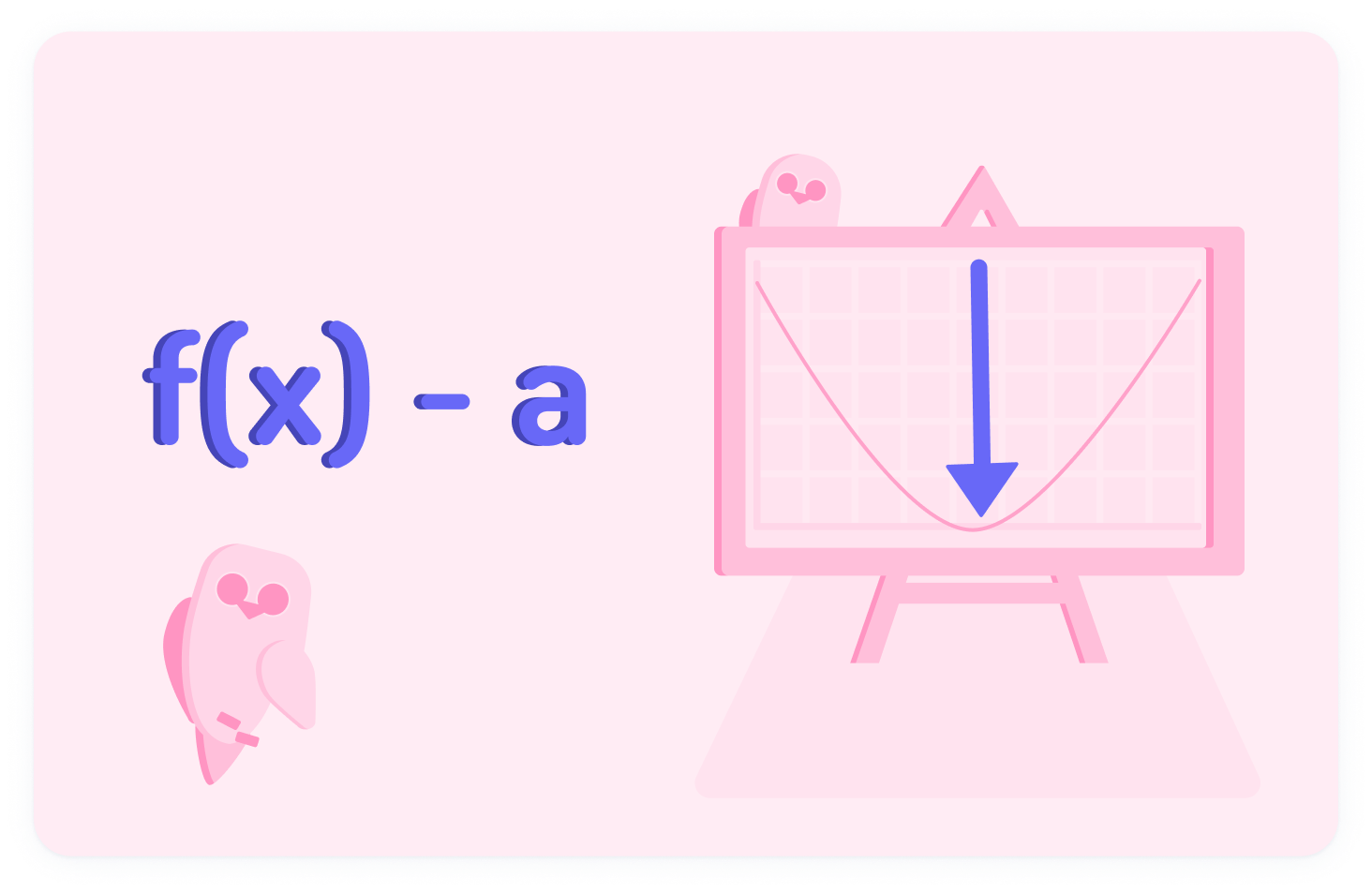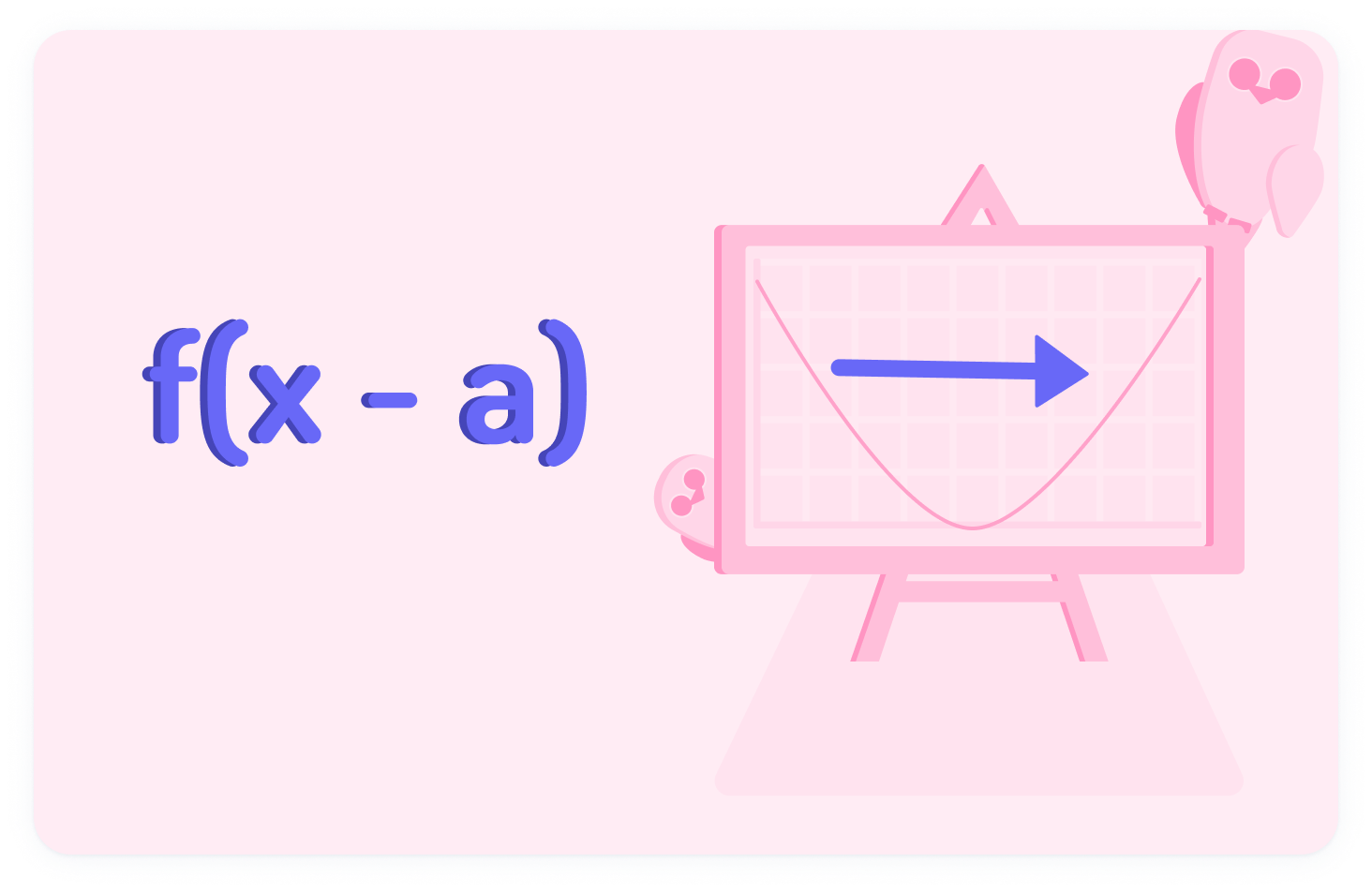YOU ARE LEARNING:
Transformations 1

Transformations 1
Translations are operations which move graphical functions up, down, left or right. We can describe them using column vectors.
Translations are operations which allow us to change the position of functions on a graph, while maintaining the same shape.
Translations move functions up, down, left or right.
f(x)+a moves the graph up by a units
This can occur with any function or point on a graph.

f(x)−a moves the graph DOWN by a units
This can also occur with any function or point on a graph.

Let's translate the point (2, 5) by f(x)−2
We know this would affect the y coordinate, as f(x)−a moves the graph down.

The point would move down 2 units
Therefore, the new point would move from (2,5) to (2,3), as the y coordinate would now be 2 units less than previously.

Find the coordinate for the point (−1,3) translated by f(x)+4


f(x+a) moves the graph LEFT by a units
This is slightly counter-intuitive, as you may expect positive to move right. However, this translation moves any function or point to the left.

f(x−a) moves the graph right by a units
A negative value of a means that we move any function or point to the right

Let's translate the point (2, 5) by f(x−3)
This time, we know it affects the x coordinate, as f(x−3) moves the graph horizontally. Remember, this moves the graph to the right.

The new coordinate would be (5,5)
By moving right, the x-coordinate increases in size by 3 units. Therefore, the coordinate moves from (2,5) to (5,5)

If the point (5,−1) is translated by f(x+4), what would the new coordinates be?


The effect of the transformation f(x)+5 is to...

We can also combine translations together, where a function can move both vertically and horizontally.
The effect of the transformationf(x−2)+3 is to move the graph...

